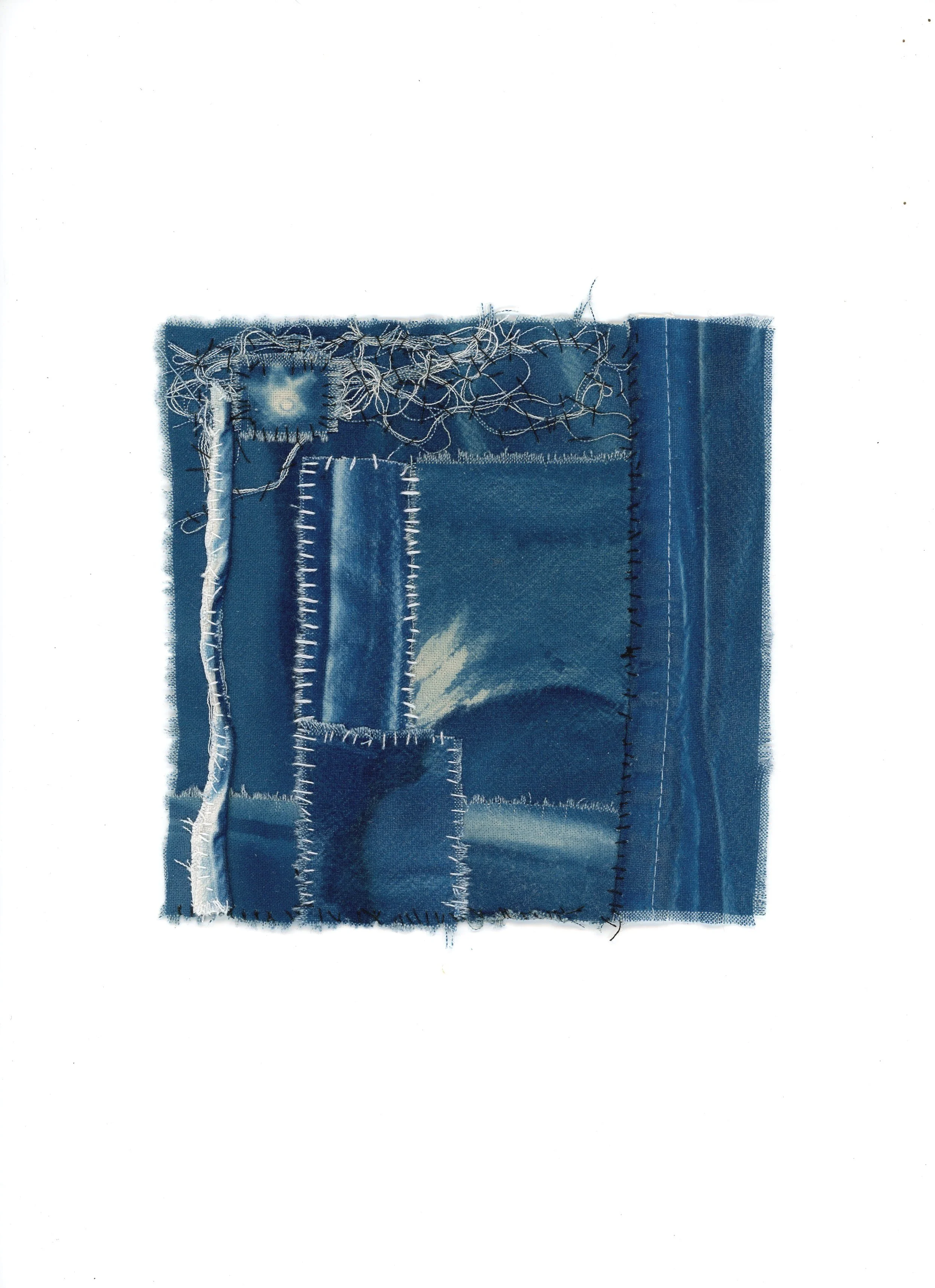Sun, Cyanotypes and Slow Stitching
This week I’ve been thinking a lot about my own home photographic practice. The windows to my bedroom let the light spill in and I scold myself for not having cyanotype chemistry already mixed up. I think back to my undergrad where I taped cyanotype treated sanitary towels to the windows of the spare bedroom; and to lockdown where me, and hundreds if not thousands of others were making the most of the sun whilst being confined to our homes, making cyanotypes in the garden or taped to the window. Further to this, I think one of the reasons cyanotypes became so popular was it allowed people to slow down and engage with a non-screen based hobby. The material nature of the process and speed of handcrafting was also beneficial to another topic that was highly present during lockdown, mindfulness and mental health.
Cyanotypes prepped the night before, ready for sunrise. 2014
I had recently attended the Stitch Festival in London with my Mum (which was great by the way! Especially as we had bought discounted tickets off of Groupon!) and came across a stall about Slow Stitching. I had never heard of it so squeezed myself in to have a look. From what I saw, it was almost like scrapbooking and collage work but with fabric. I loved what I saw and explored google for more examples. I came across some beautiful work over on Ebon Cloth where they use rust to dye their fabrics. It reminded me a lot of the collage work that Krista McCurdy produces from wet cyanotypes. The collage effect also reminded me of the work of one of my favourite mixed media photographic artists Jackie Mulder, whose work I had come to know on Instagram. So I was intrigued how Slow Stitching and photography could be combined.
At the stall were books on making natural dyes for fabric scraps, handmade fabric journals and many, many examples of the different techniques used in the craft. Some of which are, but not limited to, Boro and Sashiko, patchwork, embroidery, felting, cross stitch, bead work and fabric dying. The slow stitch movement seemed to have been popularised by Mark Lepinski when he gave a webinar about the practise in 2014. The techniques used in slow stitch today, are techniques and methods have been utilised across different cultures and countries for years. However, I believe the popularity of the practise was due to the latest buzzword of the time in American and British contexts, that of ‘mindfulness’. Slow stitching explicitly promotes this along with, sustainability and learning. By creating art works and pieces where one becomes absorbed with the process of making is a practise that I can get on board with.
I uploaded this example I found online the night before this post was to go live, having realised I had not put any examples of slow stitching in the blog piece! However I clicked through and found the location of the picture to link to a great introduction to Slow Stitch! Check it out here.
These topics also gained momentum during lockdown. Cyanotypes allowed people to experiment with alternative photographic processes that did not necessarily require specialist photographic paper. Chemistry kits could be easily purchased online and mixed up, ready to be applied to any material that was hiding around the home.
So as the sun went down, I pulled out the cyanotype bed sheet I made as a table cloth for art markets. I hadn’t had the space to work on it all at once, so had exposed pieces of it at a time. This created a messy, but not in a good way, look. I decided to tear it up, looking for impressions, marks and layers of chemistry that could be put to use in my next endeavour. I sat on the floor of my room, YouTube on in the background and got to work tearing, arranging, rearranging, documenting and then finally, sewing together.
Slow Stitch Cyanotype 01
For my first go, I feel it wasn’t terrible. Collage work is something I have never taken to with ease. I find constructing scenes with different materials difficult, unsure whether the colours work, or if I need to take away or add more pieces, and once you made your cuts or tears then there is no going back. And I have commitment issues. Working with one colour or colour palette helped take some of that guess work out of it. Then reducing the thread choice to that of black, white or blue was also helpful to the process.
Cyanotypes on fabric is such a vast denomination of this process, with maybe people customising clothes with impressions, selling bags made using fabrics they treated or art works made with silks or cottons. I really enjoyed it and think I will be giving it another go in the future. What do you think of this process? Have you tried it before? Let me know in the comments :)
P.S if you would like to see more examples of Slow Stitching, I would urge you to use Pinterest over google image search as I found this the better option for variety!





